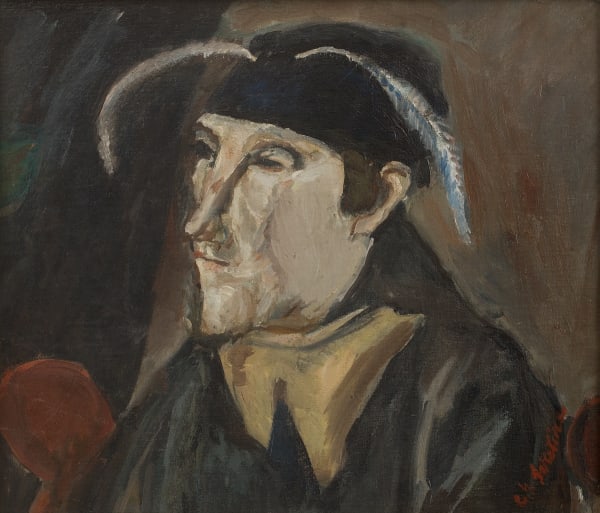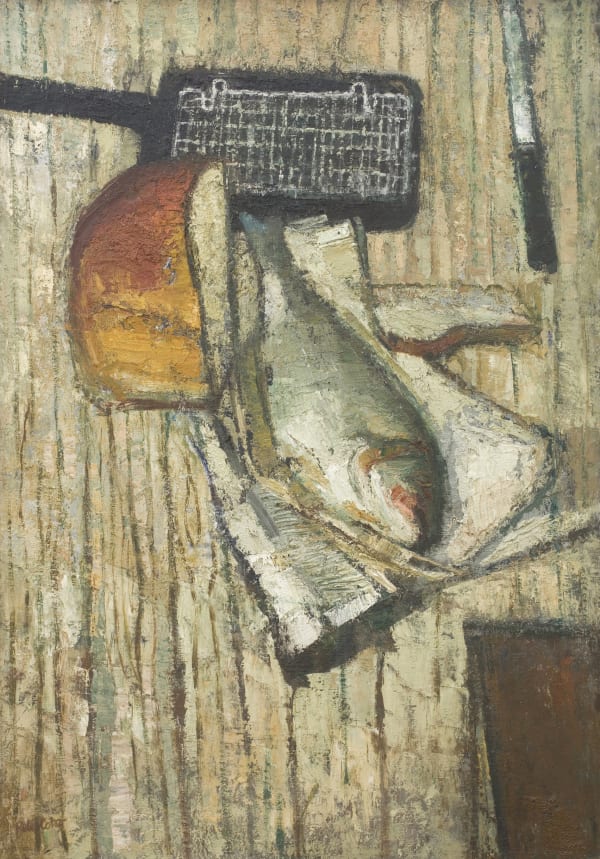-
SOUTINE
AND
BRITISH PAINTING
-
The painter Chaïm Soutine (1893–1943) was a dedicated student of nature. He worked from life and typically used the traditional genres of still life, landscape and portraiture. Yet he transformed his subjects into roiling, turbulent images, and his paintings have an acute sense of psychological animation. In his celebrated landscapes of Céret, a hilltop town near the Pyrenees where Soutine lived between 1919 and 1922, the boughs of plane trees become pulsing, flesh-like limbs. The ground underfoot lurches into thin air. The atmosphere is darkened and the mood fraught. In these paintings, Soutine reconciled the excited emotion of Vincent van Gogh with the cubist dismantling of single-point perspective performed by Picasso and Braque, even as his wild, forceful execution established a new precedent.
Besides a small exhibition of Soutine’s paintings held at Gimpel Fils, London, in 1947, there were few opportunities in post-war Britain to encounter his work in person. Most such opportunities arose in commercial galleries. In 1953, four paintings by Soutine at the Redfern Gallery attracted the attention of Francis Bacon and the critic David Sylvester. Besides such fleeting occasions, colour reproductions afforded Frank Auerbach (1932–2024) and Leon Kossoff (1926–2019) the next best thing. Not until 1963 did the Tate Gallery acquire an example of Soutine’s work, but among this circle of admirers his power was keenly apparent many years before.
Soutine’s style of painting reached far beyond Bacon, Auerbach, Kossoff and their peers. Among other British artists who worked in Paris during the twenties, Christopher Wood (1901–1930) learned to handle paint freely in ways that Soutine and his avant-garde peers had made possible. With Soutine, David Bomberg (1890–1957) shared an expressionistic, fervid quality of execution. In his meat and fish paintings of the fifties, Peter Coker (1926–2004) adopted the same raw approach to still life as both Rembrandt and Soutine before him. In later life, R. B. Kitaj (1932–2007) explored Jewish identity through the lives and art of many distinguished Jews, and on one occasion painted his own version of an early self-portrait by Soutine. As a provocation, this display proposes further points of contrast and comparison with Soutine in the work of more recent British painters such as Lynette Yiadom-Boakye (b. 1977).
-

-
-
-
-
-

-
-

-
-

-

-
- For further information or a list of available works please contact the gallery.
Soutine and British Painting
Past viewing_room







![R. B. Kitaj (1932 - 2007) White Profile with Red Hair (Vienna) [Little Convert], 1951–52 Oil on canvas 36.2 x 32.4 cm | 14 1/4 x 12 3/4 in](https://artlogic-res.cloudinary.com/w_600,c_limit,f_auto,fl_lossy,q_auto/ws-pianonobile/usr/images/feature_panels/images_and_objects/1813/r.-b.-kitaj-white-profile-with-red-hair-vienna-little-convert-1951-52-unframed.jpg)



